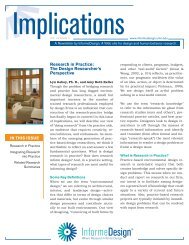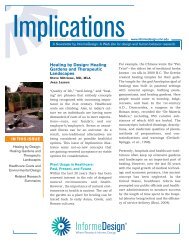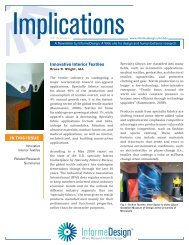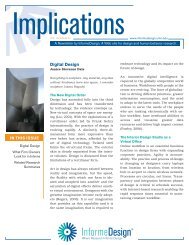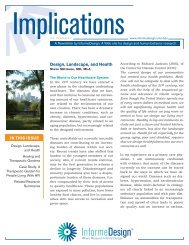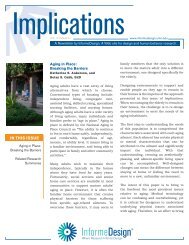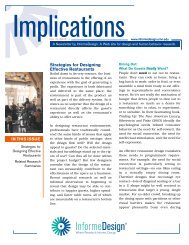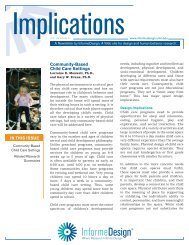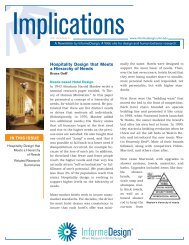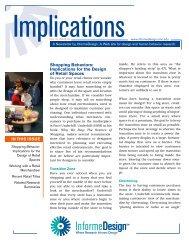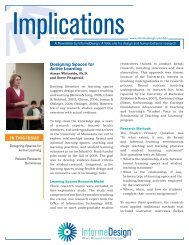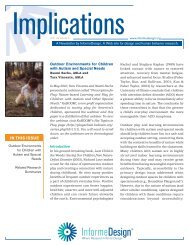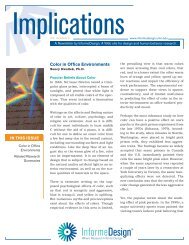Adaptive Reuse for Multifamily Housing: Volume 4 ... - InformeDesign
Adaptive Reuse for Multifamily Housing: Volume 4 ... - InformeDesign
Adaptive Reuse for Multifamily Housing: Volume 4 ... - InformeDesign
Create successful ePaper yourself
Turn your PDF publications into a flip-book with our unique Google optimized e-Paper software.
Implications<br />
www.in<strong>for</strong>medesign.umn.edu<br />
<br />
Case Study 2: Capitalizing <strong>Adaptive</strong> <strong>Reuse</strong><br />
The Lowry building trans<strong>for</strong>mation stands out as an<br />
example of capitalizing on the existing context by<br />
recognizing subtle opportunities in an existing situation.<br />
Originally the Lowry Medical Arts Building,<br />
the Lowry building lost its original vitality with the<br />
dispersion of medical offices into the suburbs. Subsequent<br />
attempts to fill the building with medical or<br />
other office tenants were not successful.<br />
What had been missing was a critical, open-minded<br />
reassessment of the building’s assets. The structure<br />
was adjacent to the most significant parks and cultural<br />
resources in the city, but because it had always<br />
been an office it wasn’t perceived to have a viable future.<br />
The development team understood<br />
that a large part of the<br />
adaptation was connecting the<br />
potential interior life of the Lowry<br />
to the existing, vibrant life<br />
outside. Unit interiors were kept<br />
relatively restrained, focusing<br />
on found qualities—rescuing<br />
the long-covered terrazzo floors,<br />
removing walls that obstructed<br />
An interior of the Lowry.<br />
the spectacular views. Units are<br />
predominately one bedroom, with open kitchens and<br />
storage lofts over bathrooms.<br />
Conclusion<br />
There is a kind of romanticism, a gentle sort of iconoclasm,<br />
in adapting buildings <strong>for</strong> residential use.<br />
These revitalized buildings are sought after not only<br />
<strong>for</strong> their amenities and features, but because to live<br />
in one is a statement of one’s interests and values<br />
that endure beyond current trends. <strong>Adaptive</strong> reuse<br />
is fundamentally sustainable development and offers<br />
a tremendous opportunity to enrich the present by<br />
engaging the past.<br />
The Lowry building, once the Lowry Medical Arts Building.<br />
References and Sources<br />
Older professional references can be of great assistance<br />
when assessing likely construction conditions.<br />
These include Architectural Graphic Standards.<br />
The 5th Edition is a particularly useful version as<br />
it is a snapshot of a transition time between historic<br />
and modern construction technologies.<br />
—Ramsey, C. (1956). Architectural graphic standards<br />
<strong>for</strong> architects, engineers, decorators, builders,<br />
draftsmen, and students. New York: Wiley.<br />
How Buildings Learn is a good general introduction<br />
to the circuitous paths the lives of buildings can take,<br />
and the implications and possibilities of reuse.<br />
Where Research In<strong>for</strong>ms Design®



